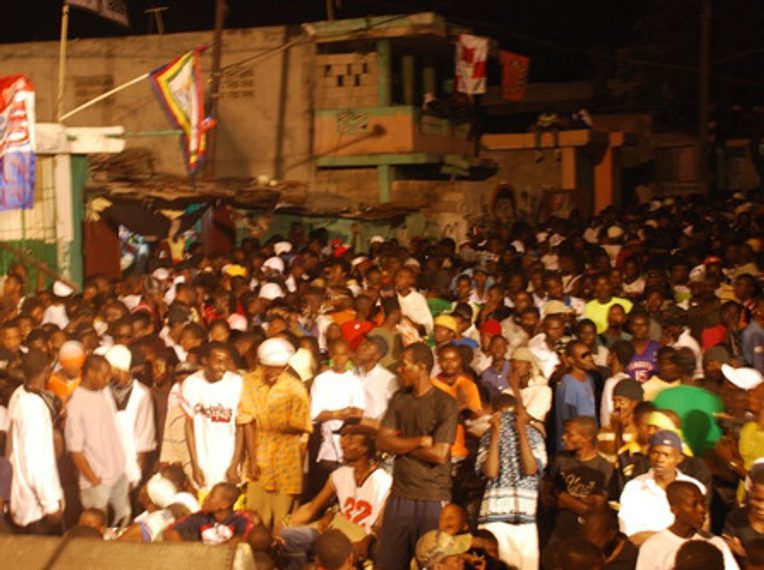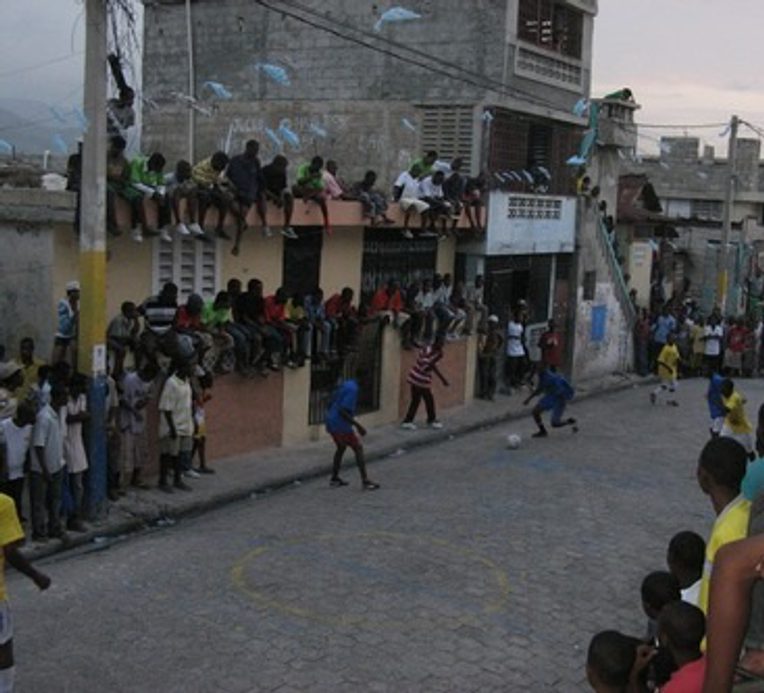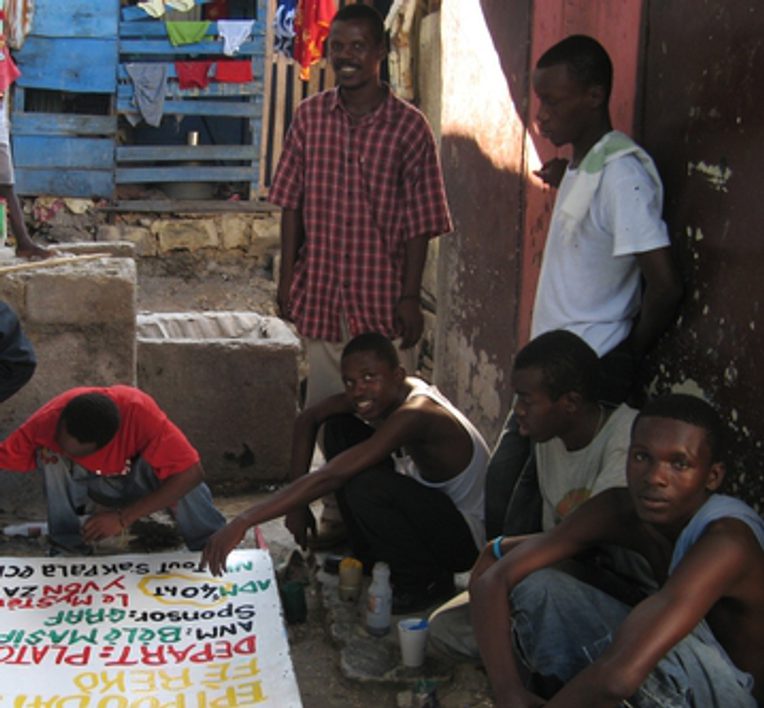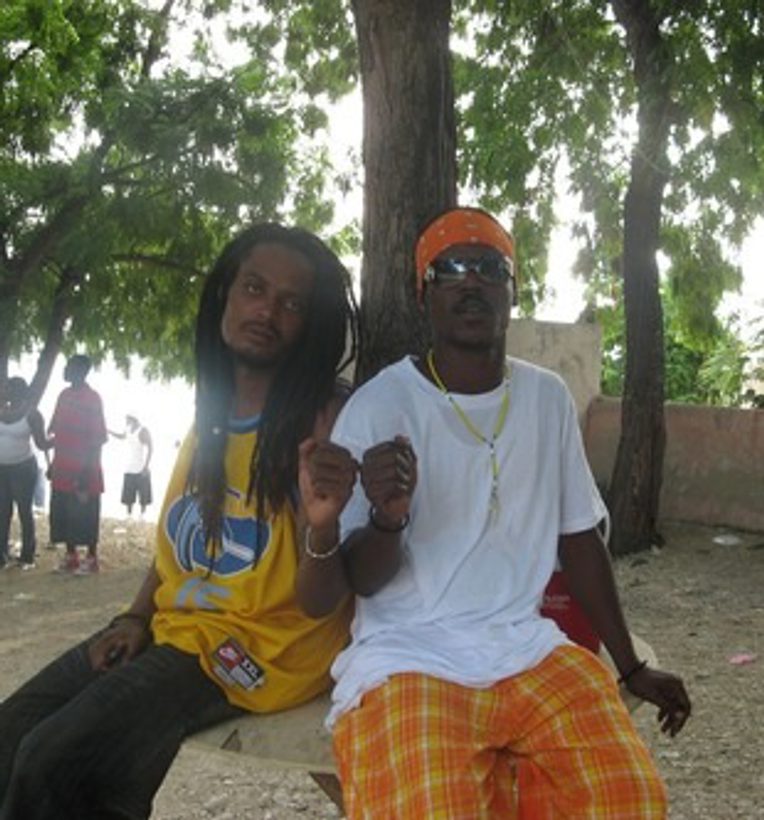This post builds on the research article “Becoming a Force in the Zone: Hedonopolitics, Masculinity, and the Quest for Respect on Haiti’s Streets,” which was published in the November 2014 issue of the Society’s peer-reviewed journal, Cultural Anthropology.
Editorial Footnote
Cultural Anthropology has published a number of articles dealing with masculinity, including Donna Perry’s “Fathers, Sons and the State: Discipline and Punishment in a Wolof Hinterland” (2009); Brad Weiss’s “Thug Realism: Inhabiting Fantasy in Urban Tanzania” (2002); Evelyn Blackwood’s “Tombois in West Sumatra: Constructing Masculinity and Erotic Desire” (1998); and Leslie Gill’s “Creating Citizens, Making Men: The Military and Masculinity in Bolivia” (1997).
Cultural Anthropology has also published articles examining sovereignty, including Anya Bernstein’s “More Alive Than All the Living: Sovereign Bodies and Cosmic Politics in Buddhist Siberia” (2012); Damani James Partridge’s “We Were Dancing in the Club, Not on the Berlin Wall: Black Bodies, Street Bureaucrats, and Exclusionary Incorporation into the New Europe” (2008); and Judith Farquhar and Qicheng Zhang’s “Biopolitical Beijing: Pleasure, Sovereignty, and Self-Cultivation in China’s Capital” (2005).

About the Author
Chelsey Kivland is the McKennan Postdoctoral Fellow in the Department of Anthropology at Dartmouth College. Her research examines street politics, social performance, and gang violence in urban Haiti to illuminate the novel political fields and subjectivities that are emerging with democratization and neoliberal development. Her book manuscript (in progress), Street Sovereigns: Politics, Violence, and Development in a Haitian Ghetto, explains the increasing insecurity in urban Haiti by uncovering how the collapse of state hegemony has raised neighborhood polities’ political clout and as a result incited conflicts between them. She is currently developing a project examining deportations of Haitians living in the U.S. who have been convicted of criminal behavior. Alongside her research, she is involved in several activist anthropology projects in her field-site.
Related Work by the Author
2012. “Unmaking the State in ‘Occupied’ Haiti.” Political and Legal Anthropology Review (PoLAR) 35, no. 2: 247–69.
2012. “To Defend or Develop? On the Politics of Engagement Among Local Organizations, Before and After the Earthquake.” Journal of Haitian Studies 18, no. 1: 75–99.

Interview
Erik Timmons: What drew you to Haiti for your fieldwork, and to the Bel Air neighborhood in particular?
Chelsey Kivland: So many things drew me to Haiti, too many to put down here. What I can answer succinctly is what convinced me to work in Haiti: the friendships and relationships I formed on my first trip there in 2006. This is also what has kept me working in Haiti. The story of working in Bel Air follows a similar logic. If I were to trace the history literally, I would go back to a meeting at the Haitian Ministry of Culture. I was then interested in rara and carnival music bands, and I went to the Ministry to gather some preliminary information. The man with whom I met knew little about the topic, but what he did know was that I was in the wrong place. He told me that if I wanted to know something about performance and politics in Haiti, I should make the short walk up the hill to Bel Air. At the time, it was still a “red zone”—an official designation by the UN peacekeeping mission—and foreigners or any nonresident was discouraged from entering (the area had waged a militant resistance following the 2004 coup and had been a target of police and peacekeeping raids throughout 2005). Lesly, my friend accompanying me at the time, was wary of making the trip, especially since it was getting late. So we decided to go the following day. My first meeting was with a man who was the president of a carnival band called Laloz and a member of Baz Grand Black, and that led to several other meetings. Shortly thereafter, I befriended Berman and Kal, who appear in the article. I was charmed by their warm welcome and enthralled with the stories they told me. And that was the beginning of what has developed into a long-term (and surely lifetime) relationship with the neighborhood.
ET: From your article it seems that you have formed strong relationships with your collaborators. Can you give some insight into the process you went through establishing relationships with the members of the base. Did you find yourself getting entangled or drawn into the local networks of power?
CK: As I mentioned, my work in the neighborhood began with a research interest in the local rara and carnival bands. This was a topic people enjoyed talking about as it showcased the area’s rich artistic history. I often think perhaps if I had begun with an interest in baz (bases), people would have been suspicious about my presence. Many still were, and jokes about my affiliation with the peacekeeping mission or the CIA abound, but I think my interest in their performance traditions allowed me to develop close relationships that then facilitated research into more sensitive topics. As for being entangled in local networks of power: certainly! The baz that figures most prominently in the article—Baz ZapZap—is certainly known as “my baz.” This embeds me in a network of relations within the baz as well as positions me in rivalries with other baz. Symbolic and material competitions are constantly playing out between baz, often with violent consequences. But there is nonetheless a recognized hierarchy of neighborhood baz. This facilitates a degree of mutual respect and, in turn, co-existence. I would also say that as a blan (a white foreigner), I enjoyed a degree of mobility within and beyond the neighborhood that my interlocutors did not. Being a blan provided social distance from local contests of power as well as a degree of racial and national privilege. Calling attention to my U.S. citizenship, my interlocutors often told me, “Nothing can happen to you here, you know, because everyone knows that if it did, it’d be on CNN in one minute!” In other words, my interlocutors and I were constantly aware of an unequal distribution of insecurity that accompanied the global hierarchy of race and citizenship.

ET: What were the challenges and potential advantages of being a female researcher carrying out fieldwork in zones where masculine pleasure is on display?
CK: This is, perhaps, the question most often asked about my research methodology. I always find that interesting because there were, of course, so many vectors of difference: race, class, education, nationality, age, etc. But most of my colleagues assume the most challenging social divide to transcend has been gender. And if you think about it, the vast majority of those who work with men or masculinity are men, and those that work with women and femininity/feminism are women. In fact, what drew me to write about gender, which I did not originally intend to do, was not only the play of masculinity and power at the baz but also the interest in my gendered position therein. To answer the question, I would say that I don’t comprehend my gendered position as particularly challenging or beneficial. It shaped my relations in particular ways, as I try to bring out in the article. I quickly realized that I became one of the women on and through which men performed manhood. This meant I had a window into their presentations of masculine selves, which also meant I had to learn to mobilize my gender and sexuality in particular ways. At times, I may have been excluded from conversations as a woman, but I also felt that people would open up about things around me in ways they did not with other men. I would also say that since men were the public face of local affairs in Haiti, it was expected that I would be interacting with men. And, in fact, it took me longer to form close relationships with women, though some of my closest friendships are now with women. At some point, I will write an article looking at gender and methodology in anthropology. As I noted, the pattern of ethnographer and subjects sharing genders is wholly naturalized, and I feel this needs to be discussed.
ET: What are you currently working on? Will your next research project build on the themes in this article or do you plan to go in a different direction?
CK: I am currently working on a book about the history and workings of baz formations in Haiti. The working title is Street Sovereigns: Violence, Politics, and Development in a Haitian Ghetto. My next project will build on this work but it will expand the theoretical and geographic scope. I plan to examine the novel subjectivities and racial populisms that are emerging with reverse, forced migrations. One of the most interesting developments in Bel Air and other popular quarters has been the influence of deportees from the United States on localized power structures. Deportees have infiltrated existing baz formations and created their own. Some of these baz make claims to power through U.S. street cred as well as transnational gang networks, even using names that reference (neo)colonial power, such as Baz Kolon Blan (foreign colonists) or Gran Pisans, (grand power, a pseudonym for the United States). However, deportees are also locally marginalized as foreigners and targeted by the police and political actors as scapegoats for crime waves. I will start with the perspective of Baz Kolon Blan, but will move through transnational networks, criminal diasporas, and deportation policy. Since most deportees are black men from U.S. ghettos, deportations provide a key arena to analyze the gendered, racial, and spatial construction of criminality across neoliberal democracies.
Questions for Classroom Discussion
- How does the author define and mobilize the concept of hedonopolitics? What is the relationship between pleasure, masculinity, and vernacular sovereignty in the ethnographic examples she gives?
- How are sovereignty and the political redefined through feelingful events in the article? How does such an account differ from other accounts of political action?
- Why does the author trace the construction of manliness and masculinity in hedonopolitics? In what ways is gender and power combined here and to what end?
- How does this focus on hedonopolitics revise existing accounts of sovereignty in postcolonial societies?
- How might one theorize the relationship between hedonopolitics and necropolitics in anthropological accounts of sovereignty?
